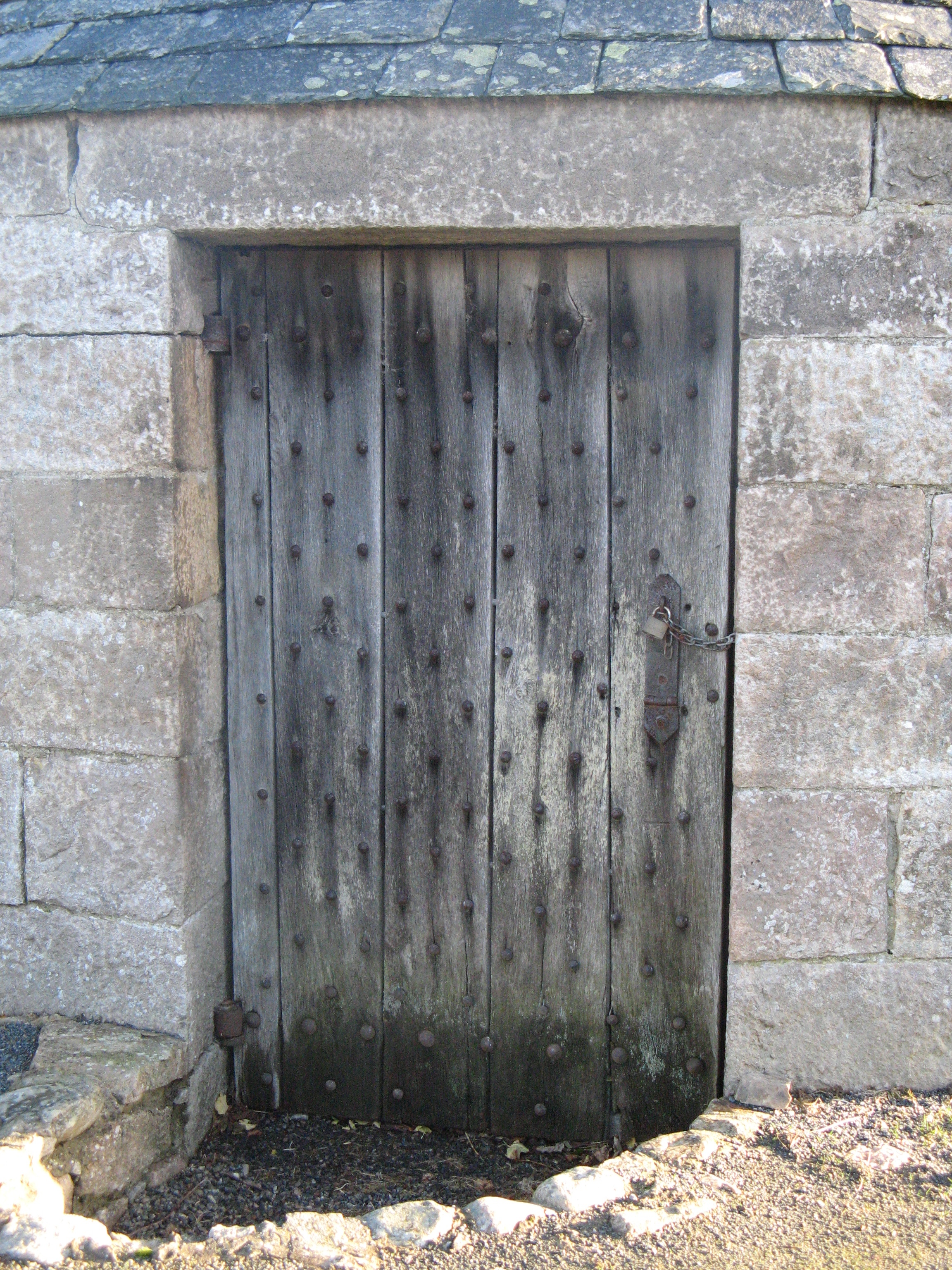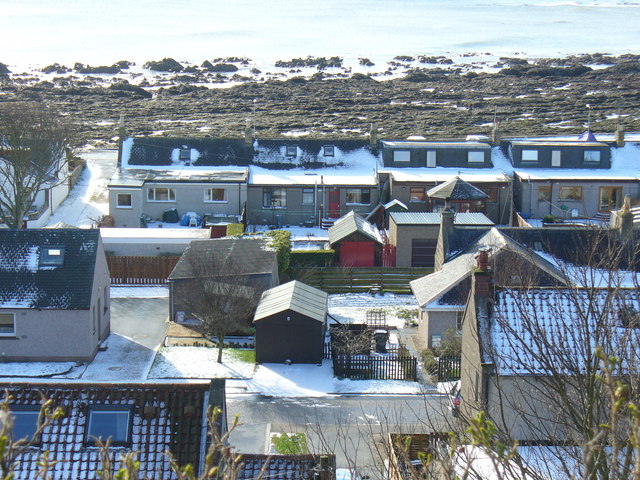|
Morthouse
A morthouse or deadhouse was a specialised secure building usually located in a churchyard where bodies were temporarily interred before a formal funeral took place. These buildings date back to the time when Body snatching, bodysnatchers or resurrectionists frequently illegally exhumed dead bodies that were then sold for dissection as part of human anatomy training at universities, etc. Morthouses were alternatives to mortsafes, watch houses, watch towers, etc. A morthouse differs from a morgue, mortuary or morgue, which is a facility for the storage of human corpses awaiting identification or autopsy prior to burial. Graveyard security The Christian tradition at the time was that Universal resurrection, resurrection after death and entry into the afterlife required the body of the deceased to be whole at burial so that person could enter the kingdom of Heaven for eternal life complete in body and soul. The dissection of the corpses of hanged criminals was viewed in this context ... [...More Info...] [...Related Items...] OR: [Wikipedia] [Google] [Baidu] |
Udny Mort House
Udny Mort House is a morthouse in the old kirkyard at Udny Green, Aberdeenshire, north-east Scotland. Built in 1832, it is today a Category B listed building. It housed corpses until they started to decompose, so their graves would not be desecrated by resurrectionists and body-snatchers digging them up to sell the cadavers to medical colleges for dissection. Bodies were permitted to be stored for up to three months before burial. The circular morthouse was designed with a revolving platform and double doors. After the passage into law of the Anatomy Act 1832 Udny Mort House gradually fell into disuse; minutes of the committee responsible for its operation cease in about July 1836. Background In the 18th and 19th centuries body-snatchers, also known as resurrectionists, shush-lifters or noddies, excavated graves to meet the increasing demand from medical colleges for bodies to dissect, as not enough were being supplied from executions. Precautions were taken to protect the ... [...More Info...] [...Related Items...] OR: [Wikipedia] [Google] [Baidu] |
Mortsafe In Colinton Kirkyard
A mortsafe or mortcage was a construction designed to protect graves from disturbance, used in the United Kingdom. Resurrectionists had supplied schools of anatomy since the early 18th century. This was due to the necessity for medical students to learn anatomy by attending dissections of human subjects, which was frustrated by the very limited allowance of dead bodies – for example the corpses of executed criminals – granted by the government, which controlled the supply. Official inaction The British authorities turned a blind eye to grave-rifling because surgeons and students were working to advance medical knowledge. They kept publicity to a minimum to prevent people from realising what was happening. The cases of grave-robbing that came to light caused riots, damage to property and even fatal attacks. In the early 19th century, with the great increase in numbers of schools and students, there was continual rifling of secluded graveyards, fights in city burial grounds and ... [...More Info...] [...Related Items...] OR: [Wikipedia] [Google] [Baidu] |
Mortsafe
A mortsafe or mortcage was a construction designed to protect graves from disturbance, used in the United Kingdom. Resurrectionists in the United Kingdom, Resurrectionists had supplied schools of anatomy since the early 18th century. This was due to the necessity for medical students to learn anatomy by attending dissections of human subjects, which was frustrated by the very limited allowance of dead bodies – for example the corpses of executed criminals – granted by the government, which controlled the supply. Official inaction The British authorities turned a blind eye to grave-rifling because surgeons and students were working to advance medical knowledge. They kept publicity to a minimum to prevent people from realising what was happening. The cases of grave-robbing that came to light caused riots, damage to property and even fatal attacks. In the early 19th century, with the great increase in numbers of schools and students, there was continual rifling of secluded gravey ... [...More Info...] [...Related Items...] OR: [Wikipedia] [Google] [Baidu] |
Cowie, Aberdeenshire
Cowie is an historic fishing village in Kincardineshire, Scotland. This village has existed since the Middle Ages, but in current times it is effectively subsumed into the town of Stonehaven. It had an estimated population of in . History William Camden recorded the existence of Cowie in 1596 in his historical writings. (Watt, 1985) Notable historic features in the vicinity include Cowie Castle (now ruined), Chapel of St. Mary and St. Nathalan (now ruined), the Stonehaven Tolbooth, Muchalls Castle and Fetteresso Castle. Cowie Village was situated at the southern end of the ancient Causey Mounth trackway, which road was constructed on high ground to make passable this only available medieval route from coastal points south from Stonehaven to Aberdeen. This ancient passage specifically connected the River Dee crossing (where the present Bridge of Dee is situated) via Portlethen Moss, Muchalls Castle and Cowie Castle to the south. (Hogan, 2007) The route was that taken ... [...More Info...] [...Related Items...] OR: [Wikipedia] [Google] [Baidu] |
Kemnay, Aberdeenshire
Kemnay (Scottish Gaelic language, Gaelic: ''Camnaidh'') is a village west of Aberdeen in Garioch, Aberdeenshire, Scotland. History The village name ''Kemnay'' is believed to originate from the Celtic words that mean "little crook in the river" due to the village location on the bend of the River Don, Aberdeenshire, River Don. Kemnay House is classified by Historic Scotland as a category A listed building. The village was served by Kemnay railway station on the Alford Valley Railway (GNoSR), Alford Valley Railway from 1859 to 1950. The alignment through the village has been lost to housing developments. The pre-Reformation church was dedicated to St Anne. The parish was united with Craigern in 1500 and both came under the umbrella of nearby Kinkell, Aberdeenshire, Kinkell. The old church was extensively rebuilt in 1632. The current parish church dates from 1844. The pre-1844 church was of unusual cruciform style, with the earth floor 1m below the surrounding ground, and prone ... [...More Info...] [...Related Items...] OR: [Wikipedia] [Google] [Baidu] |
Udny Mort House 01
Udny may refer to: * Udny Station, a small village in Aberdeenshire, Scotland * Udny Green, a hamlet in Aberdeenshire, Scotland * Clan Udny, a Scottish clan from Aberdeenshire, Scotland * Udny Yule George Udny Yule, CBE, FRS (18 February 1871 – 26 June 1951), usually known as Udny Yule, was a British statistician, particularly known for the Yule distribution and proposing the preferential attachment model for random graphs. Perso ... (1871–1951), British statistician See also * Udney, a given name and surname * Undy, a village in Monmouthshire, south east Wales * * EDNY (other) * WDNY (other) {{disambiguation, geo, surname ... [...More Info...] [...Related Items...] OR: [Wikipedia] [Google] [Baidu] |
Clatt
Clatt (Gaelic , 'concealed'), is a village in Aberdeenshire, Scotland. The remains of a morthouse are located in the cemetery of the old church. The village is more fully known as Kirktown of Clatt. It is situated on the Gadie Burn at the foot of the Coreen Hills, 2 miles (3 km) east of Rhynie. Its schools are Clatt Primary School and The Gordon Schools, Huntly. Clatt Parish Church Within Clatt stands the former Clatt Parish Church. It was built 1799 incorporating many mediaeval fragments from a previous church and a belfry of 1640; it was repaired in 1828 and 1866. It was declared redundant in 1996 and subsequently closed as a place of worship. Following subsequent mergers in the 2020's, the area now finds itself in the larger West Gordon Parish Church parish. Clatt Primary School Clatt Primary School was a primary school in the village of Clatt, Aberdeenshire, Scotland, built in the 19th century. It is around 10 miles from Huntly. It was a small school with one teacher. ... [...More Info...] [...Related Items...] OR: [Wikipedia] [Google] [Baidu] |
Collace
Collace () is a parish in Perthshire, Scotland, northeast of Perth, in Strathmore. The parish boundary includes the neighbouring villages of Kinrossie and Saucher. The traditional industries of the area are farming, quarrying (sandstone) and weaving, but the latter is now gone. Dunsinane Hill, mentioned in the Shakespeare play ''Macbeth'', is located near Collace. King's Seat, a low hill east of the village, is marked romantically on older maps as "Macbeth's Castle". Bandirran Stone Circle stands just south of the village. Buildings The currenCollace parish churchbuilding dates from 1812 to 1813 and is on the site of an earlier church dedicated in 1242. Four stained glass windows from 1919 depict scenes from the life of Christ. In the graveyard are important 17th- and 18th-century gravestones, a rare medieval Discoid stone and a conserved mort-house. Next to the church are the remains of a medieval building with a Romanesque arch which was used as the mausoleum for t ... [...More Info...] [...Related Items...] OR: [Wikipedia] [Google] [Baidu] |
Cramond
Cramond Village (; ) is a village and suburb in the north-west of Edinburgh, Scotland, at the mouth of the River Almond where it enters the Firth of Forth. The Cramond area has evidence of Mesolithic, Bronze Age and Roman activity. In modern times, it was the birthplace of the Scottish economist John Law (1671–1729). Cramond was incorporated into the City of Edinburgh by the Edinburgh Boundaries Extension and Tramways Act 1920 ( 10 & 11 Geo. 5. c. lxxxvii). Etymology It was once believed that Cramond Roman Fort was known to the Romans as ''Alaterva''. A stone altar was dug up in the grounds of Cramond House dedicated "To the Alatervan Mothers and the Mothers of the Parade-ground."Site Record for Cramond Edinburgh, Cramond Roman Fort Details – Royal Commission on the A ... [...More Info...] [...Related Items...] OR: [Wikipedia] [Google] [Baidu] |
Earl Of Eglinton
Earl of Eglinton is a title in the Peerage of Scotland. It was created by James IV of Scotland in 1507 for Hugh Montgomerie, 3rd Lord Montgomerie. In 1859, the thirteenth Earl of Eglinton, Archibald Montgomerie, was also created Earl of Winton in the Peerage of the United Kingdom, which gave him an automatic seat in the House of Lords, and both earldoms have been united since. Furthermore, other titles held with the earldoms are: ''Lord Montgomerie'' (created 1449), ''Baron Ardrossan'' (1806) and ''Baron Seton and Tranent'' (1859). The first is in the Peerage of Scotland, while the latter two are in the Peerage of the United Kingdom. William Dunbar mentions a Sir Hugh of Eglinton in his '' Lament for the Makaris'', citing him as a fellow poet. He has sometimes been tentatively identified as Huchown, but this is not certain. The Earl of Eglinton is the hereditary Clan Chief of Clan Montgomery. The ancestral seat was Eglinton Castle in Kilwinning, North Ayrshire. Lords Mon ... [...More Info...] [...Related Items...] OR: [Wikipedia] [Google] [Baidu] |
Coull Morthouse - Geograph
Coull is a surname. Notable people with the surname include: * Cynthia Coull (born 1965), Canadian figure skater * Gary Coull (1954–2006), Canadian businessman *George Coull Dr George Coull FRSE (1862? – 10 January 1934) was a Scottish pharmaceutical chemist. He served as Managing Director of Raimes Clark & Co, parent company to Scotland's largest independent chemist, Lindsay & Gilmour. Life He was born in Edinb ... (1862–1934), Scottish pharmaceutical chemist * Joanna Coull (b. 1973), British swimmer * Robert Coull (b. 1966), British cyclist See also * Coull Castle, in Scotland * Coull Quartet, English string quartet * * Coul (other) {{surname, Coull English-language surnames ... [...More Info...] [...Related Items...] OR: [Wikipedia] [Google] [Baidu] |
Belhelvie
Belhelvie () is a small village and civil parish in Aberdeenshire in Scotland.Belhelvie. . The parish has a population of 3,802, of which 1,653 are in the village. The history of the parish is available online.. Murdoch and A. Grosjean, Belhelvie, 2000> The churchyard contains a notable example of a used against the activities of bodysnatchers in the early 19th century.
|







